PVC pipe fittings are essential components in modern plumbing systems‚ offering durability‚ corrosion resistance‚ and ease of installation. Common types include elbows‚ tees‚ and couplers‚ each designed for specific applications. They are widely used in water supply‚ irrigation‚ and drainage‚ offering cost-effective and reliable solutions. Their versatility makes them ideal for both residential and industrial settings.
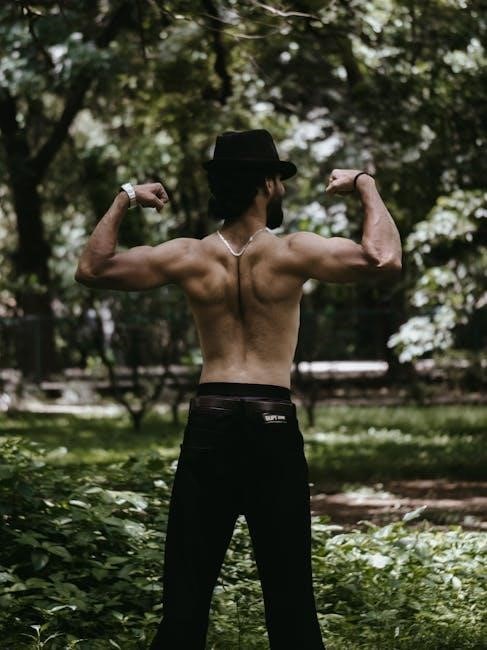
Overview of PVC Pipe Fittings
PVC pipe fittings are versatile and widely used components in plumbing and piping systems. Made from polyvinyl chloride‚ these fittings are known for their durability‚ corrosion resistance‚ and ability to withstand various environmental conditions. They are commonly used to connect‚ adapt‚ or direct the flow of fluids in systems such as water supply‚ drainage‚ and irrigation. PVC fittings are available in a variety of shapes and sizes‚ including elbows‚ tees‚ couplings‚ and adapters‚ each designed for specific functions. Their lightweight design and ease of installation make them a preferred choice for both residential and industrial applications. PVC fittings are also resistant to chemicals and UV light‚ ensuring long-term performance. With their affordability and reliability‚ PVC pipe fittings have become a cornerstone in modern plumbing systems‚ offering efficient and durable solutions for fluid transport and management.
Importance of PVC Pipe Fittings in Plumbing Systems
PVC pipe fittings play a crucial role in modern plumbing systems due to their durability‚ corrosion resistance‚ and versatility. They are essential for connecting pipes‚ adapting sizes‚ and directing fluid flow efficiently. Unlike metal fittings‚ PVC fittings are resistant to rust‚ chemicals‚ and UV light‚ making them ideal for both indoor and outdoor applications. Their lightweight design simplifies transportation and installation‚ reducing labor costs. Additionally‚ PVC fittings are cost-effective and require minimal maintenance‚ ensuring long-term reliability. They are widely used in water supply systems‚ drainage‚ and irrigation‚ providing leak-proof connections when installed correctly. The use of PVC fittings contributes to the overall efficiency and longevity of plumbing systems‚ making them a vital component in residential‚ commercial‚ and industrial settings. Their adaptability to various environments ensures they remain a preferred choice for plumbers and engineers worldwide.
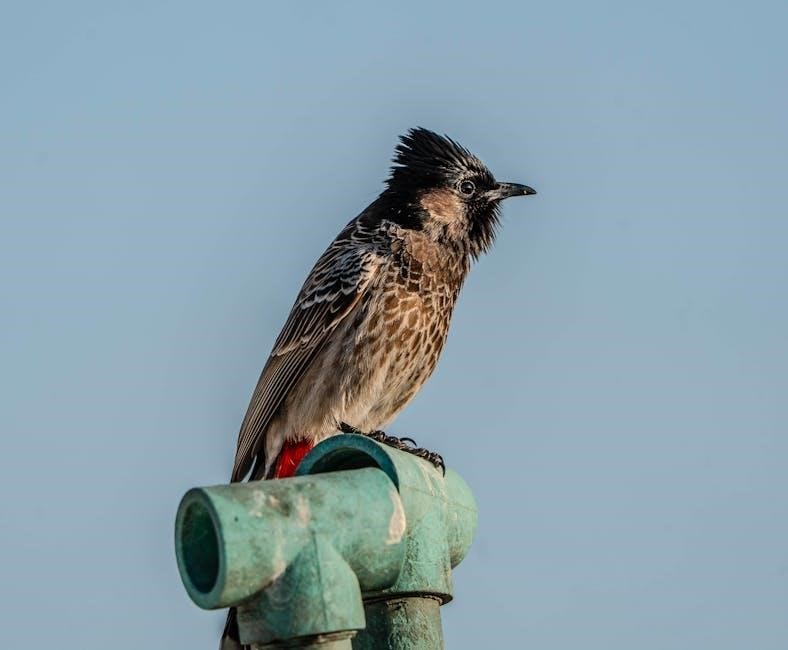
Common Applications of PVC Pipe Fittings
PVC pipe fittings are widely used in various applications due to their versatility and durability. They are commonly found in water supply systems‚ where they ensure safe and leak-free connections. In drainage systems‚ PVC fittings are used to direct wastewater efficiently‚ resisting corrosion and chemical damage. Irrigation systems also benefit from PVC fittings‚ as they provide reliable connections for water distribution in agricultural settings. Industrial applications utilize PVC fittings for chemical processing and waste management‚ where resistance to harsh substances is crucial. Additionally‚ PVC fittings are used in HVAC systems for ductwork and ventilation. Their lightweight and ease of installation make them ideal for residential plumbing‚ including sink drains‚ toilets‚ and shower connections. Overall‚ PVC pipe fittings are a cost-effective solution for diverse plumbing needs‚ offering durability and reliability across multiple industries. Their adaptability ensures they remain a preferred choice for both simple and complex piping systems.
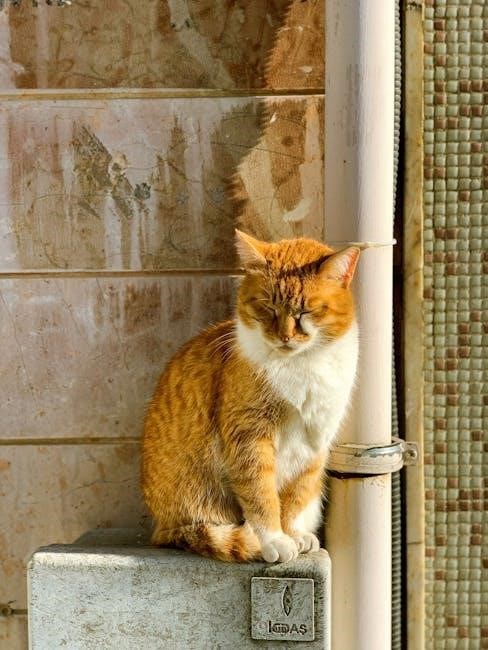
Types of PVC Pipe Fittings
PVC pipe fittings come in various types‚ including elbows‚ tees‚ couplings‚ adapters‚ valves‚ unions‚ flanges‚ end caps‚ bushings‚ and nipples. Each serves a specific function‚ ensuring efficient and durable plumbing connections.
Elbows
PVC elbows are fittings used to change the direction of a pipe run. They are available in various angles‚ with the most common being 90 degrees and 45 degrees. These fittings are essential for creating bends in plumbing systems‚ allowing for flexible and efficient pipe layouts. PVC elbows are manufactured from durable PVC compounds‚ ensuring resistance to corrosion‚ chemicals‚ and wear. They are lightweight and easy to install‚ making them a popular choice for both residential and commercial applications. Elbows are typically connected using solvent cement or push-fit connections‚ ensuring a leak-proof seal. Proper sizing and alignment are crucial to maintain water flow efficiency and prevent pressure drops. Regular inspection and maintenance can extend the lifespan of PVC elbows‚ ensuring reliable performance in various plumbing setups. Their versatility and durability make them a cornerstone in modern piping systems. Always follow installation guidelines for optimal results.
Tees
PVC tees are fittings with three openings‚ used to connect three pipes‚ allowing for a branch in the pipeline. They are available in equal or reducing types‚ depending on the application. Equal tees have all openings of the same size‚ while reducing tees have smaller branch openings. These fittings are durable‚ resistant to corrosion‚ and suitable for various environments. PVC tees are commonly used in water supply‚ irrigation‚ and drainage systems. Their lightweight design and ease of installation make them a preferred choice for plumbers. Proper sizing and alignment are crucial to ensure efficient flow rates and prevent pressure drops. PVC tees are manufactured from high-quality PVC compounds‚ ensuring long-lasting performance. Regular maintenance‚ such as inspecting for debris buildup‚ can extend their lifespan. Tees are versatile and essential for creating branch connections in plumbing systems‚ making them a fundamental component in modern piping setups.
Couplings
PVC couplings are fittings used to connect two pipes of the same diameter‚ ensuring a secure and leak-proof joint. They are available in socket‚ threaded‚ or flanged types‚ catering to different installation needs. Socket couplings are the most common‚ using solvent cement for adhesion‚ while threaded couplings offer flexibility with threaded connections. Flanged couplings provide a bolted connection‚ ideal for high-pressure systems. PVC couplings are durable‚ resistant to chemicals‚ and suitable for both underground and above-ground applications. Their lightweight and ease of installation make them a popular choice for plumbers. Proper alignment and use of appropriate adhesives are crucial to ensure a strong bond. Regular inspection for cracks or damage can prevent leaks and extend their service life. Couplings are essential for maintaining the integrity of PVC piping systems‚ allowing for quick repairs and system expansions without compromising performance.
Adapters
PVC adapters are fittings designed to connect pipes of different sizes or types‚ enabling transitions between various pipe diameters or materials. They are available in male‚ female‚ or universal styles‚ accommodating a wide range of applications. These fittings are essential for system flexibility and customization. Adapters can be used to reduce or increase pipe size‚ facilitating compatibility between different plumbing components. They are often employed in irrigation‚ water supply‚ and drainage systems. PVC adapters are lightweight‚ corrosion-resistant‚ and easy to install‚ making them a cost-effective solution for plumbing needs. Proper sizing and alignment are critical to ensure a secure and leak-free connection. Adapters are also used to transition between PVC and other materials‚ such as metal or ABS‚ using appropriate connectors. Their versatility and durability make them a key component in modern plumbing systems‚ ensuring efficient and reliable performance across various environments.
Valves
Valves are crucial components in PVC pipe systems‚ designed to control the flow of fluids. They are available in various types‚ including ball valves‚ gate valves‚ globe valves‚ and check valves‚ each serving different functions. Ball valves offer quick operation and reliable shut-off‚ while gate valves are ideal for on/off control. Globe valves are suitable for regulating flow‚ and check valves prevent backflow. PVC valves are lightweight‚ corrosion-resistant‚ and easy to install‚ making them suitable for water supply systems‚ irrigation‚ and industrial applications. Proper installation and maintenance are essential to ensure optimal performance and prevent leaks. Adhering to quality standards ensures durability and reliability‚ making PVC valves a preferred choice for many plumbing needs.
Unions
PVC unions are fittings used to connect two pipes together‚ allowing for easy disconnection without cutting the pipe. They are designed with male and female threads or slip joints‚ enabling a secure and leak-proof connection. Unions are ideal for applications where pipes need to be frequently disconnected for maintenance or replacement. They are commonly used in plumbing systems‚ water supply lines‚ and irrigation setups due to their durability and resistance to corrosion. PVC unions are lightweight‚ easy to install‚ and require minimal tools‚ making them a convenient option for both residential and industrial use. Their versatility and reliability make them a key component in modern piping systems‚ ensuring long-lasting performance and ease of use. Proper installation and adherence to quality standards are essential to maximize their efficiency and prevent potential leaks or failures over time.
Flanges
PVC flanges are circular fittings used to connect pipes to valves‚ pumps‚ or other equipment. They feature a flat face with bolt holes‚ allowing for secure connections using bolts and gaskets. PVC flanges are typically available in slip-on or socket weld styles‚ with threaded options for added versatility. Made from durable PVC resin‚ they are resistant to corrosion‚ chemicals‚ and UV light‚ making them ideal for harsh environments. PVC flanges are commonly used in water treatment‚ chemical processing‚ and industrial plumbing systems where corrosion resistance is critical. Their lightweight design and ease of installation make them a preferred choice for many applications. Proper alignment and tightening of bolts are essential to ensure a leak-proof seal. PVC flanges are also available in various sizes and pressure ratings to suit different system requirements‚ ensuring reliable performance in diverse settings. Regular inspection and maintenance can extend their service life‚ making them a cost-effective solution for modern plumbing needs.
End Caps
PVC end caps are fittings designed to cover and seal the open ends of PVC pipes‚ preventing leaks and protecting the system from contamination. Available in various sizes‚ they are typically made from durable PVC resin‚ offering excellent resistance to corrosion‚ chemicals‚ and UV light. PVC end caps are easy to install and require minimal tools‚ making them a practical solution for sealing pipe ends in plumbing‚ irrigation‚ and industrial systems. They are commonly used in applications where pipes are not connected to other fittings or valves‚ ensuring a watertight seal. PVC end caps are also lightweight and cost-effective‚ making them a preferred choice for many applications. Regular inspection and maintenance of end caps are essential to ensure long-term performance and prevent potential issues. Their versatility and reliability make them an indispensable component in modern piping systems‚ providing a secure and durable seal for PVC pipes in various environments.
Bushings
PVC bushings are fittings used to connect pipes of different diameters or to reduce the size of a pipe in a plumbing system. They are typically threaded or push-fit and provide a secure connection between pipes of varying sizes. PVC bushings are made from high-quality PVC resin‚ ensuring durability‚ chemical resistance‚ and resistance to corrosion. They are commonly used in irrigation‚ drainage‚ and water supply systems where pipe size transitions are necessary. Bushings are available in different types‚ including reducing bushings‚ hex bushings‚ and socket bushings‚ each designed for specific applications. Proper installation of PVC bushings is crucial to prevent leaks and ensure system efficiency. Regular inspection and maintenance can extend the lifespan of these fittings. PVC bushings are a cost-effective and reliable solution for adapting pipe sizes in various plumbing scenarios‚ offering flexibility and strength in demanding environments.
Nipples
PVC nipples are short‚ straight pipe fittings used to connect two PVC pipes or fittings. They are typically threaded on both ends‚ allowing for secure connections in plumbing systems. PVC nipples are made from durable PVC material‚ offering resistance to corrosion‚ chemicals‚ and wear. They are commonly used in water distribution‚ irrigation‚ and industrial applications where precise connections are required. PVC nipples are available in various lengths and sizes to accommodate different pipe diameters and system needs. Their threaded design ensures a tight seal when paired with appropriate connectors or adapters. PVC nipples are easy to install and maintain‚ making them a popular choice for both residential and commercial plumbing projects. Regular inspection and proper installation can prevent leaks and ensure optimal performance. PVC nipples are a versatile and essential component in modern plumbing‚ providing reliable connections in diverse applications.
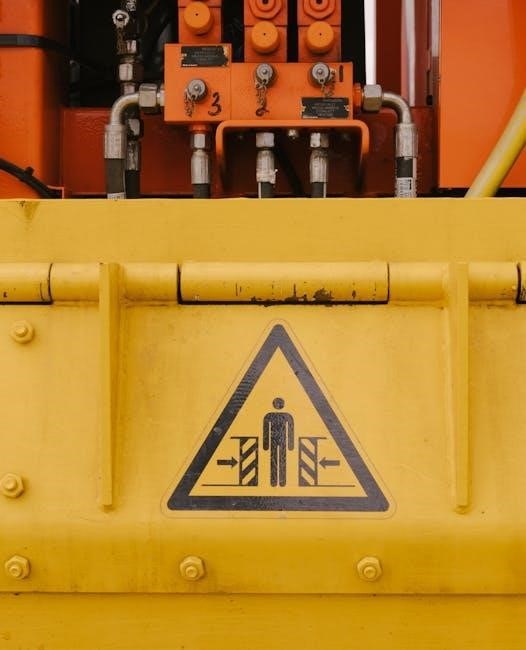
Materials and Manufacturing
PVC pipe fittings are made from polyvinyl chloride (PVC)‚ a durable‚ corrosion-resistant material. The manufacturing process involves mixing PVC resin with additives‚ followed by extrusion and molding to create the desired shapes and sizes.
Raw Materials Used in PVC Pipe Fittings
The primary raw material for PVC pipe fittings is polyvinyl chloride (PVC) resin‚ a thermoplastic polymer. Additional materials include stabilizers to prevent degradation‚ lubricants for smooth processing‚ and pigments for color. Other additives like fillers and plasticizers may be added to enhance properties.
Manufacturing Process of PVC Pipe Fittings
The manufacturing of PVC pipe fittings involves several key steps. First‚ raw materials like PVC resin‚ stabilizers‚ and lubricants are mixed and compounded into a uniform powder. This compound is then melted and formed into the desired shape using injection molding or extrusion. For complex fittings‚ injection molding is commonly used‚ while simpler shapes may be extruded and then machined. The molten PVC is cooled and solidified in molds‚ creating the fitting’s structure. After molding‚ the fittings undergo finishing processes‚ such as trimming excess material and polishing. Quality control checks ensure dimensional accuracy and durability. Finally‚ the fittings are packaged and prepared for distribution. This process ensures PVC pipe fittings are both durable and reliable for various plumbing applications.
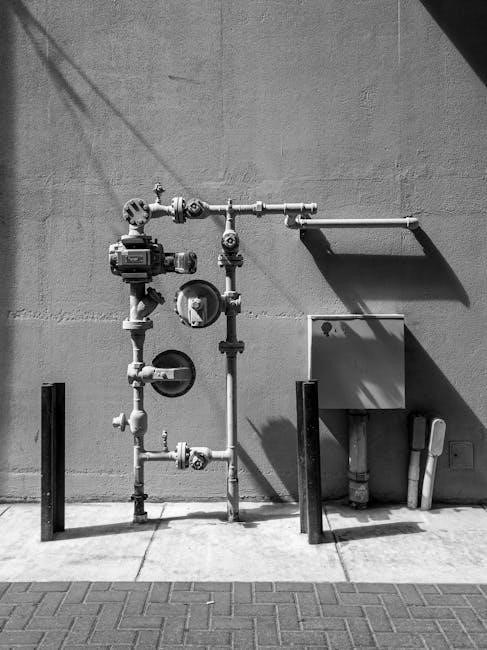
Quality Standards for PVC Pipe Fittings
PVC pipe fittings must adhere to strict quality standards to ensure reliability and safety in plumbing systems. These standards are typically defined by regulatory bodies such as ASTM (American Society for Testing and Materials) and ISO (International Organization for Standardization). Key criteria include material composition‚ dimensional accuracy‚ and performance under various conditions. Fittings are tested for tensile strength‚ impact resistance‚ and chemical resistance to ensure they can withstand environmental and operational stresses. Manufacturers must also comply with specifications for pressure ratings‚ ensuring fittings can handle the required water or fluid pressure without failing. Additionally‚ standards often address the use of non-toxic materials‚ particularly for fittings used in potable water systems. Compliance with these standards is verified through rigorous testing and certification processes‚ guaranteeing that PVC pipe fittings meet industry benchmarks for durability and safety. Adhering to these quality standards is essential for maintaining the integrity of plumbing systems.
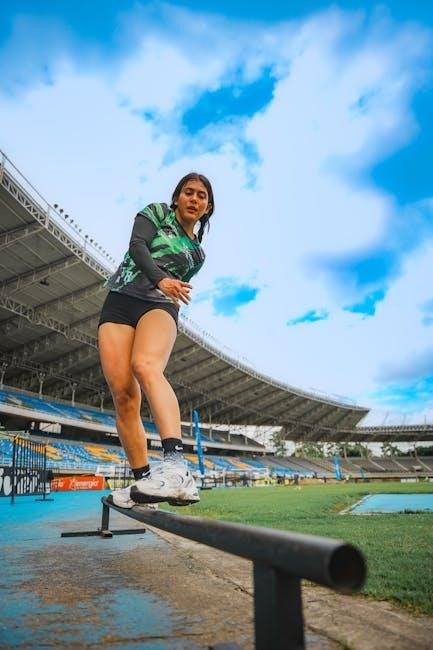
Installation and Usage
PVC pipe fittings are installed using solvent cement and primer‚ ensuring secure connections. Proper alignment and preparation of pipe ends are crucial for leak-free joints. Always follow manufacturer guidelines for usage and installation.
Step-by-Step Guide to Installing PVC Pipe Fittings
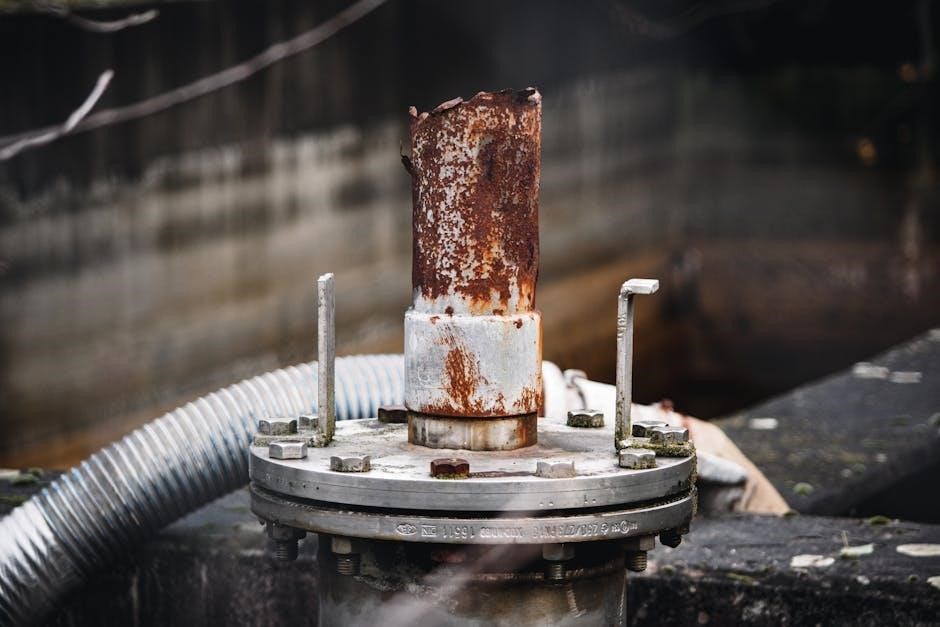
- Prepare the Pipe and Fittings: Clean the PVC pipe and fitting surfaces to ensure they are free from dirt‚ oil‚ and moisture for a strong bond.
- Apply Primer and Cement: Use a PVC primer on the pipe and fitting‚ then apply PVC cement to both surfaces. This creates a chemical bond between the materials.
- Assemble the Fittings: Quickly align the pipe and fitting‚ then twist slightly while pushing together to ensure full contact. Hold in place for a few seconds.
-
- Test the Connection: After setting‚ inspect the joint for leaks by applying water or air pressure. If leaks occur‚ disassemble and reassemble the fitting.

Following these steps ensures a secure and leak-free connection for PVC pipe fittings‚ making them durable and long-lasting in plumbing systems.
Tools Required for Installing PVC Pipe Fittings
Installing PVC pipe fittings requires specific tools to ensure a secure and leak-free connection. A pipe cutter or hacksaw is needed to cut the PVC pipes to the desired length. A deburring tool is essential to smooth the cut edges‚ preventing sharp burrs that could cause issues during the fitting process.
A PVC primer and cement‚ along with an applicator brush‚ are necessary for creating a strong bond between the pipe and fittings. A cleaner should be used to prepare the surfaces‚ removing any dirt‚ oil‚ or moisture that might interfere with the bonding process.
A miter box or cutting guide can help achieve precise cuts‚ especially when multiple pieces need to be cut. A utility knife can be useful for trimming or making small adjustments. Pliers or wrenches are required for tightening the fittings securely.
Measuring tools‚ such as a tape measure‚ are crucial for ensuring accurate measurements and proper fitment. A level can be helpful for maintaining alignment‚ particularly in larger installations. Clamps or vises are useful for holding the pipe steady during cutting or fitting.
Finally‚ safety gear like gloves and safety goggles should always be worn to protect against sharp edges and flying debris. Having these tools on hand will make the installation of PVC pipe fittings efficient and effective.
Tips for Maintaining PVC Pipe Fittings
Regular maintenance of PVC pipe fittings is crucial to ensure long-term performance and prevent failures. Start by inspecting the fittings for signs of wear‚ cracks‚ or leaks. Clean the pipes and fittings regularly to remove dirt‚ debris‚ or chemical buildup that could compromise their integrity.
Protect PVC fittings from direct sunlight‚ as UV exposure can cause degradation over time. Apply a UV-resistant coating or cover exposed pipes. Avoid exposing PVC to high temperatures or harsh chemicals‚ as they can weaken the material.
Use compatible materials and avoid mixing PVC with incompatible substances‚ such as certain solvents or adhesives. Tighten fittings securely but avoid over-tightening‚ as this can cause stress cracks. Regularly check connections for tightness and reapply primer and cement if necessary.
Replace worn-out or damaged fittings promptly to prevent system failures. Store unused PVC fittings in a cool‚ dry place‚ away from direct sunlight and chemicals. Following these tips ensures a durable and leak-free plumbing system.
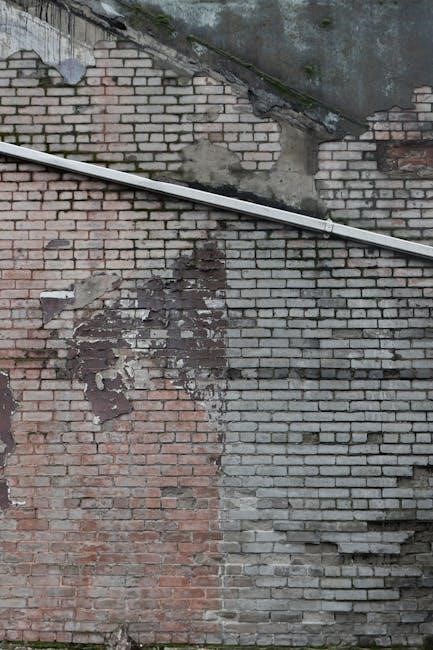
Common Challenges and Solutions
Leaks‚ improper sizing‚ and material degradation are common issues. Use correct adhesives‚ ensure proper fitting alignment‚ and protect PVC from UV exposure. Regular inspections and timely replacements prevent major failures and extend system lifespan.
Common Issues with PVC Pipe Fittings
PVC pipe fittings often face issues like leaks‚ cracks‚ and improper connections. Leaks can occur due to incorrect adhesive application or loose joints. Cracks may develop from exposure to extreme temperatures or physical stress. Improper sizing or alignment of fittings can lead to system inefficiency. Additionally‚ UV exposure over time can degrade PVC materials‚ causing brittleness and failure. Another common issue is chemical incompatibility‚ where certain substances corrode the PVC‚ compromising its integrity. To address these‚ proper installation techniques‚ regular inspections‚ and timely replacements are essential. Using high-quality adhesives and ensuring fittings are UV-resistant can mitigate risks. Addressing these issues early prevents costly repairs and ensures long-term system reliability.
Troubleshooting Leaks in PVC Pipe Fittings
Leaks in PVC pipe fittings are often caused by improper installation‚ damaged pipes‚ or loose connections. One common issue is poor solvent welding‚ where the adhesive fails to create a strong bond. This can be resolved by ensuring the surfaces are clean and dry before applying the solvent cement. Another cause is overtightening‚ which can crack the PVC material. Inspecting the fitting for cracks or damage before installation is crucial. Additionally‚ leaks can occur due to incompatible or worn-out gaskets‚ which may need replacement. UV exposure and extreme temperatures can also weaken the PVC over time‚ leading to leaks. To fix leaks‚ apply a PVC repair compound or replace the faulty fitting entirely; Regular maintenance and inspections can help identify potential issues early‚ preventing costly repairs and ensuring system longevity.
Best Practices for Avoiding Fitting Failures
To ensure the longevity and reliability of PVC pipe systems‚ adhering to best practices is essential. Proper sizing and selection of fittings for the specific application are critical. Always follow the manufacturer’s guidelines for installation‚ including recommended solvent cement application and curing times. Using high-quality PVC materials that meet ASTM standards can prevent premature wear and failure. Protecting pipes and fittings from direct sunlight and extreme temperatures is also vital‚ as UV exposure can degrade PVC over time. Regular inspections and maintenance help identify potential issues before they lead to failures. Additionally‚ avoiding over-tightening and using compatible gaskets can prevent cracks and leaks. Proper storage of PVC fittings in a cool‚ dry environment before installation further reduces the risk of damage. By implementing these practices‚ system performance and durability are significantly enhanced‚ minimizing the likelihood of fitting failures.